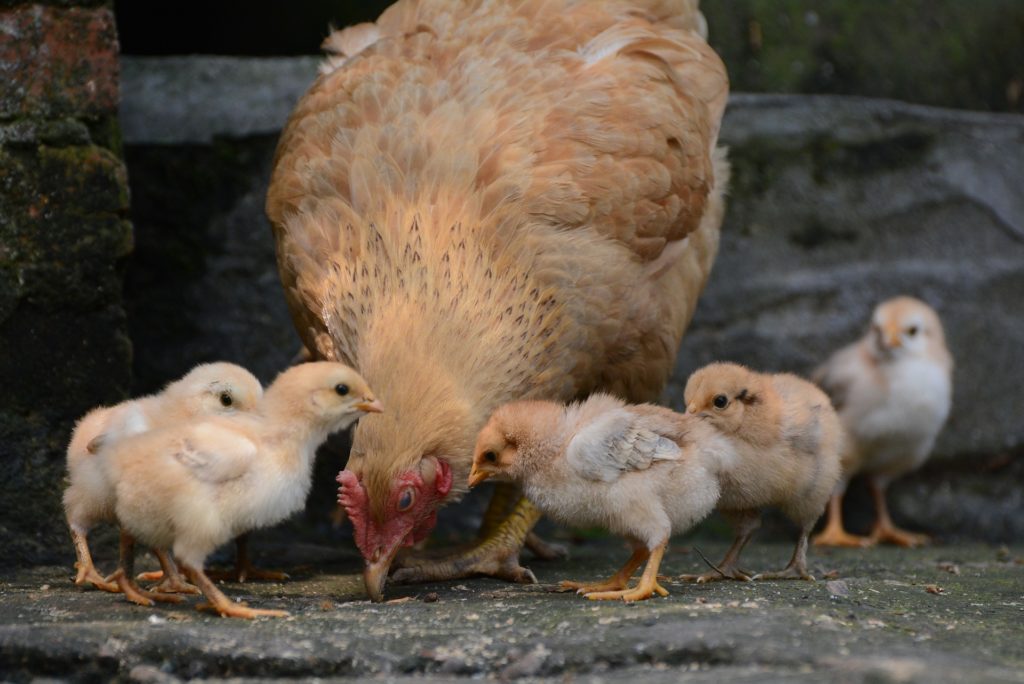Will you be getting new baby chicks this year?
Whether it’s your first time welcoming chicks into your family or you’ve done it before, it’s important to be prepared! Check out this must-have chicken checklist and make sure you’re ready with everything you’ll need to start these little bundles of joy off right in their new home.
Chick Checklist
Do you have the following items ready and in working condition for when you bring your chicks home?
Brooder
All you really need to make the perfect brooder is a plastic bin, tub or other type of container. Fancy brooders can be bought but often it is easier, and more cost effective, to use something you have around the house.
It is important that your brooder does not allow any air to flow through it. The chicks should not be able to feel any type of draft in their brooder.
In the bottom of the brooder you should have some sort of bedding. Good options for non-slip bedding include: pine shavings, peat moss, finely shredded paper, crushed corn cobs, chopped straw, puppy pads, paper towels or even sand. The bedding should be applied about 1-2 inches thick. Bedding should be checked daily and changed if necessary. Wet spots should always be removed, as allowing wet litter to sit can result in the growth of mold.
If any other animals are in the vicinity of the brooder you may want to consider covering the top of it with chicken wire, mesh or another appropriate cover that will not impact ventilation. This is very important – you do not want to block ventilation in the brooder!
Don’t forget – a small brooder might be all you need in the beginning but your chicks will grow quickly! Don’t be caught off-guard, make sure you have a bigger space available for them when they outgrow the brooder.
Eventually you will need a chicken coop. Your coop should:
- Have at least one nesting box for every three hens
- Offer, at minimum, 2 square feet of coop floor per chicken
- Be large enough for you to stand in to clean and gather eggs
With a chicken coop – the bigger, the better. The more space you can provide your chickens, the happier and healthier they will be.
Once old enough, your birds will also need a place to roam. A chicken run or a backyard where they can walk about and take a dust bath is ideal. This area should be protected and able to keep your chickens in while also keeping predators out.
Heat Source
This is a very important item when bringing home new baby chicks!
For the first week, the temperature in the chicks’ brooder should be approximately 95 -100 degrees Fahrenheit (35 – 38 degrees Celsius). After this the temperature can be decreased gradually. Around week 7 – 12 the chicks should have had their second moult and should have their feathers gown in and be able to maintain their own body temperature, at which point you can remove the heat lamp, unless of course it is particularly cold.
If you are using a heat lamp as your source of heat it is very important that it is secure and in proper working condition, so as not to cause a fire! Heat lamps are the easiest and simplest option however, if you are not careful they can be a very dangerous fire hazard. Heating plates are a more expensive option but are much safer, if you have the choice.
Observe your chicks to see if the heat is ok for them – if they are scattered to the edges of the brooder then it is likely too hot for them and if they are clustered together under the lamp then they are too cold. If they are scattered all over the place then the temperature is just right!
Feed and Water
Feeders and waterers made specifically for chicks should be used. These can be purchased at your local feed store. Special chick waterers are particularly important, as an open bowl of water is a drowning hazard for your baby chicks.
It is important to consider how many chicks you will be getting when preparing your feeders and waterers. For just a few birds, a round plastic or metal feeder is good but for more chicks a trough-style feeder will work better.
Chick starter feed is also a must, as chicks require a high protein diet while growing.
More tips…
- A few hours before your chicks arrive home turn on the heat lamp and make sure the temperature in their brooder is a steady 95 degrees Fahrenheit (35 degrees Celsius).
- Gently dip the beak of each chick in the water as you remove them from their travel box. This will let them know where their water is.
- Make sure their water is close enough to the heat lamp but not too close! Cold water will not be received well and water that is too warm can harbor unwanted pests.



